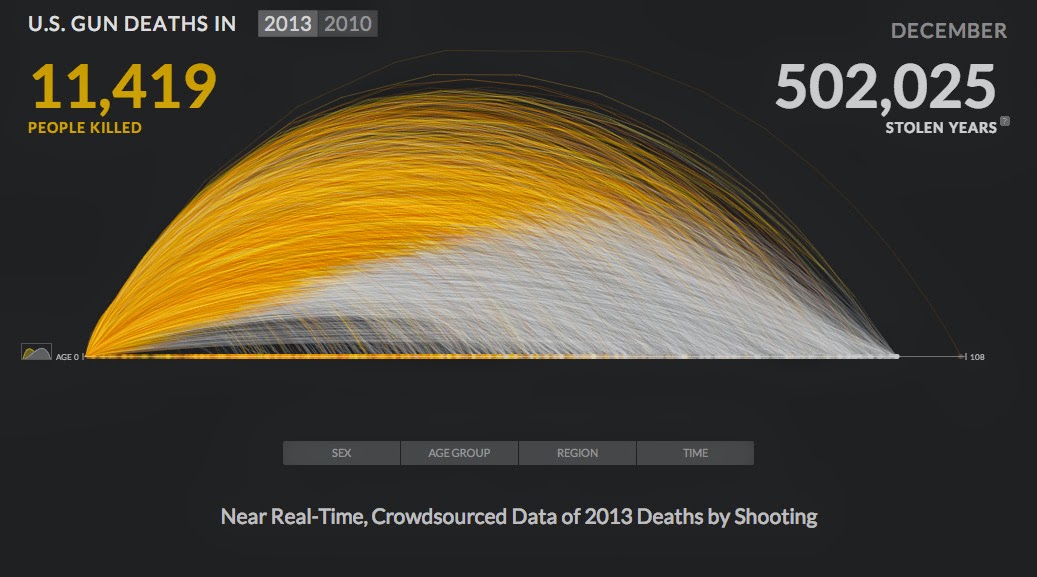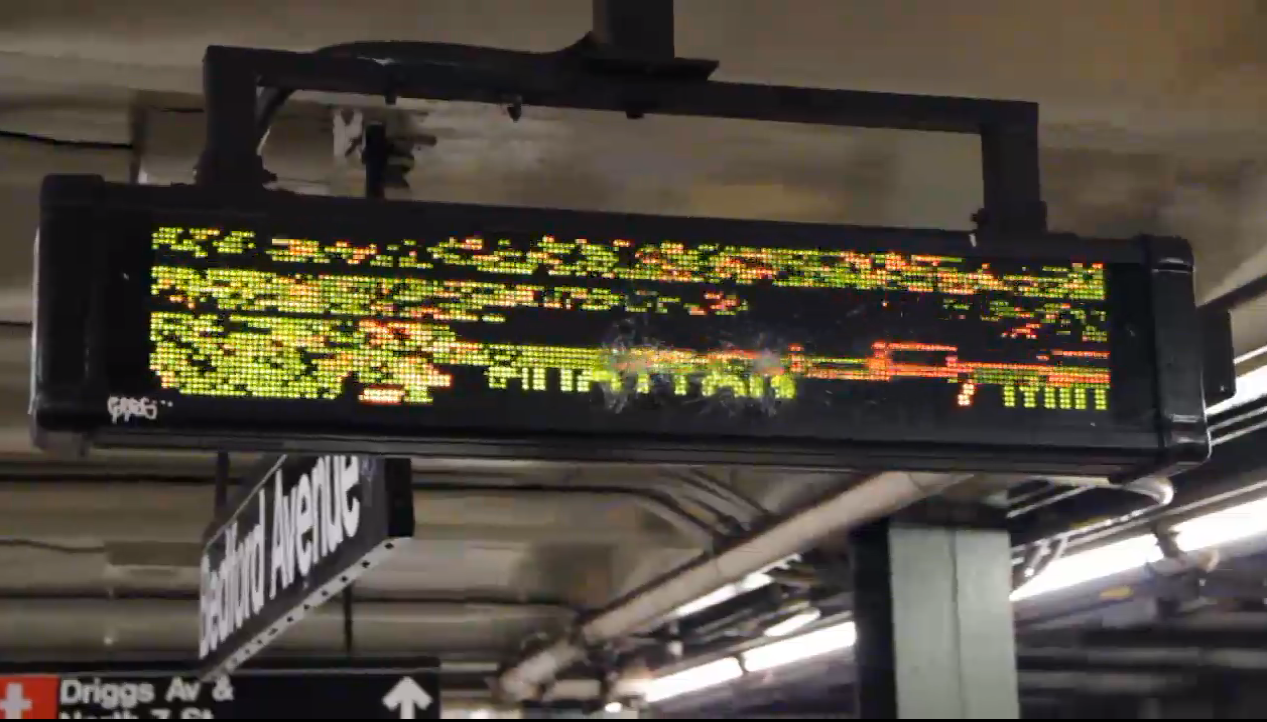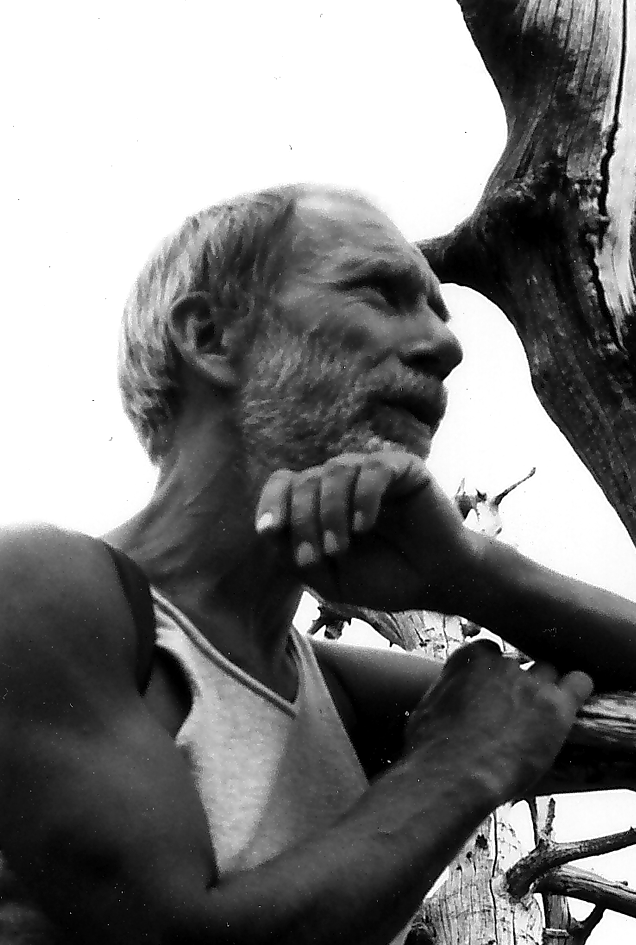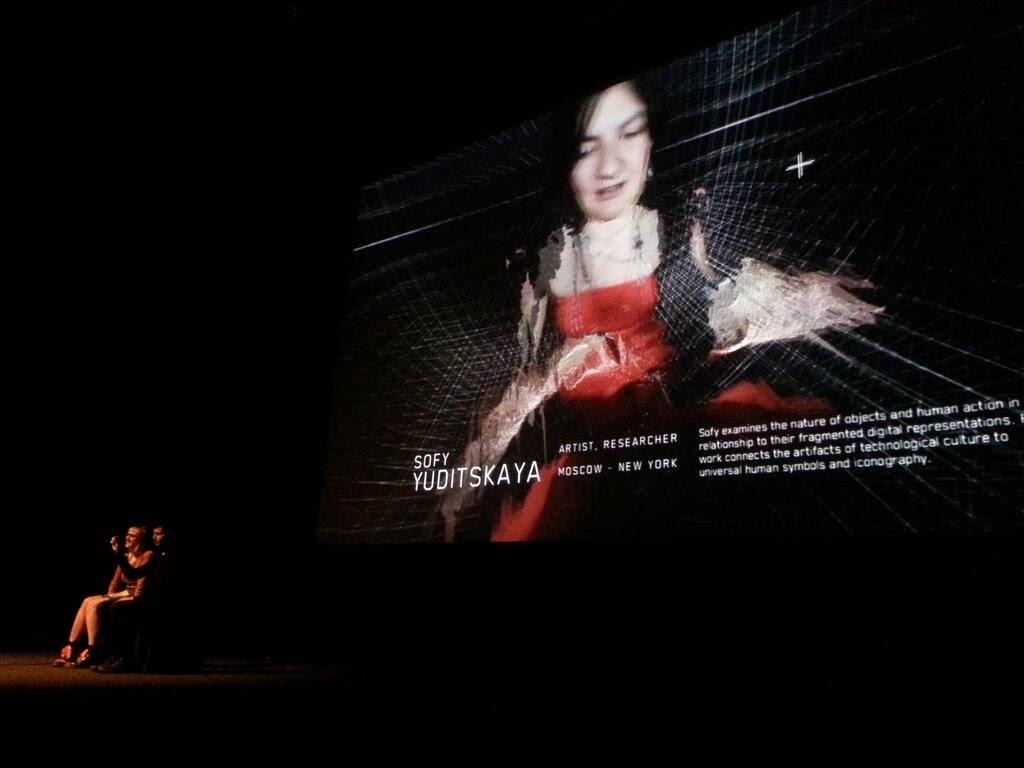Eyeo is a very different type of conference. From the ground up it's an energetic community of creative technologists of different stripes.
To give you some idea how people feel about it, check out this tweet from Kate Crawford:

There was a lot that went on that was great. I want to take a minute to draw out a few themes.
Data, data, data, data, data
This was the most widely-used term at the festival. Remembering that Eyeo is a festival at the intersection of arts & technology, why such a strong focus on data?
At root something has shifted about our perception of data. The continuing drip-feed of revelations after Snowden is fundamentally changing the way we view our relationship with data - and we know we can't go back. This creative coding community seems hyper-aware of this change, particularly because of the role it increasingly plays in the industries we all work in.
Data analysis, data visualization, data and art, data and surveillance, big data, tiny data, the list goes on. There were talks around all of these, but one talk that stood out for me was Kim Rees.

Usually the debate centers around the utility afforded by data versus the risks of misuse. Rees spoke instead of data as a new currency. Something which is traded for value yes, but also data as something local, ubiquitous and capable of independent action. Data, Rees said, will slip fluidly between nanobots, internet-of-things devices and cloud services, reducing our direct interactions with computers and screens.
A new generation of data natives, like digital natives before them, will grow up knowing only a world of ubiquitous data. Designers should get a head start by switching User-Centered Design for "User-Absent Design". As the touchpoints we have with computing get smaller and less command-control, the notion of a user will become outdated.
Rees suggests we embrace the new context, warts and all, because it isn't going anywhere.
Kim Rees is one of the co-founders of Periscopic - tagline: "do good with data".
Learning by breaking
Another idea doing the rounds here is that by breaking a system, by subverting it's intention, we can learn something which otherwise remains invisible.
This is basically the manifesto of 'glitch', art which encourages something unexpected in an otherwise ordered system.

This idea was typified by Kyle McDonald's workshop, in which participants used Hex editors to break image files, and played 'exquisite corpse' with drawing algorithms to generate unexpected results.
In a way, this idea is kind of frivolous. Yes, you can learn something by breaking, but you can also learn by fixing, studying, disassembling etc.
However looking deeper, there's something more energetic about the intention of glitch. For example, the speed with which we are creating new societal norms is increasing, so the speed with which we can understand them is important too. Breaking things is probably the quickest and most accessible way to look at an underlying system.
It seems to be more of a mindset. At first glance glitch appears to be about compression algorithms and transcoding. But more deeply glitch is about control of our destiny. Its a critique of the immersive culture of polished brand and presentation, of built environment and conformity.
If we discover an images underlying patterns, then we show that its appearance is carefully constructed and its human-relevant content just a facade.
The algorithmic and the artistic mindset
The topic of mindsets came up in different forms over the week, and I'm glad it did as I'm in the middle of writing an article about it for P2 magazine.
It was Frieder Nake who expressed the concept in terms of algorithmic and artistic, while delivering his keynote Tuesday night. Nake was well-suited to discuss, being one of the early pioneers of computer art.

The idea goes something like this. At some point, to understand the relationship between computers and art, you have to understand the algorithmic mindset. Nake amused the crowd with a story about painters in the 50s who refused to accept the idea that computers could 'do their job' the way they did it.
However, computers weren't doing the painter's jobs, they were doing a very different job - a job that is expressed and understood by algorithmic thinking.
Once you make that leap, you have two broad creative mindsets open to you as a practitioner - algorithmic and artistic. Nake seemed to be saying that you need to employ both to be successful. What he expressed in no uncertain terms was that algorithmic thinking alone would not get you there.
RGBDToolkit comes of age
One final thought is that I was really glad I went to see James George and Jonathon Minard present the interactive documentary CLOUDS.
I have worked with the DepthKit, aka RGBD Toolkit, many times and have taught and written tutorials on it.
However, it's about more than just the association - I have daydreamed about really effective interactive documentary for quite a while. This is the first really convincing example of it I have seen.

George and Minard navigated the documentary on-stage in a kind of "director's cut", although of course in reality every time you experience the documentary it will be different.
Oddly, the thing that makes truly it compelling is the simple fact that it was shot in 3D. It's the missing ingredient of interactive storytelling... more than a cosmetic tweak.
It opens up the experience to a different kind of immersion than that of 2D film and cinema. It brings metaphors from gaming to bear, such as progression, and traversal through space.
Like much interactive narrative, it effectively circumvents the 'voice of authority' issue often found in traditional documentary, and puts the experiencing audience into a new kind of position of power.
It also raises new questions - the voice of authority may be hidden, but it's still there at lower and less obvious layers. A bit like a choose-your-own-path adventure, the illusion of control belies the fact that the possible paths through the system, and the system itself, were all crafted by someone for some purpose.
However the real takeaway here is that it was a privilege to watch. It's something new, exciting, creative, collaborative, and very much in the spirit of Eyeo. There are moments in life when you pay more attention, because you feel like you are watching something really interesting unfolding in front of you.
Eyeo 2014 was one of those moments.